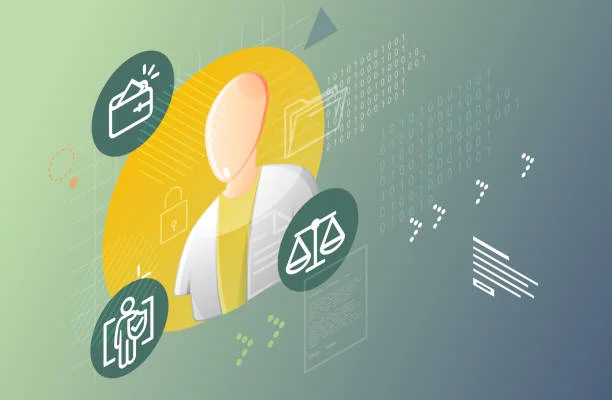Age assurance refers to the methods and processes to verify or infer an individual’s age, so a business can determine the appropriateness of access, content, and services. Age assurance systems determine whether businesses in the digital space protect minors or satisfy legal obligations and liability concerns. This becomes key in the gaming, e-commerce, social networking, and age-restricted streaming industries.
The Basic Methods of Age Assurance
Declarative checks (self-attestation)
The most basic form of age verification is asking the user to enter their date of birth or to click a checkbox indicating they are of a certain age. It is simple to implement and inexpensive, but trivial to circumvent, making it easy to exploit. Self-attestation may serve as the primary barrier to lower-risk content, but it should not be the last line of defense when significant legal or safety concerns are at stake.
Document-based verification
This method checks the validity of government-issued IDs and other official papers. If conducted correctly, it achieves a fair balance between reliability, user trust, and accuracy. Most uses consist of capturing the image of an ID and authenticating it, often along with a face comparison. For high-risk transactions, document verification is appropriate; however, sensitive personal data is involved, and therefore, it must be handled with care.
Attribute verification and minimal data approaches
Instead of collecting all the data for an entire identity, the verification of a single attribute can be conducted. For example, the statement “over 18” can be confirmed with a birthdate, without storing the entire birthdate or ID. This concept of data minimization still enables compliance and provides a lower privacy risk. Where regulation complies, privacy-preserving approaches are has proven to be the most effective.
Behavioral and contextual signals
Age can be estimated from signals a device emits, patterns of browsing, time of day, activity, purchase history, and other contextual variables. Even though these signals are less definitive, they can still be relied upon, to a degree, for risk scoring, and adaptive interventions like stronger verification for out-of-norm cases.
Accuracy, privacy, and user experience
For age assurance, the biggest hurdle is finding the right equilibrium between accuracy and user experience. Confidence can be gained with more stringent methods such as document checks and biometric comparisons; however, these methods also raise privacy issues and introduce friction. More lenient methods can aid user flow, but they also risk allowing underage users to pass through.
Start with low-friction checks, escalating only when risk indicators arise. Attribute-based responses minimize data retention while risk-based layering. Communicate with users about the rationale behind certain checks to improve trust and user experience with completion.
To meet the needs of global privacy standards like the Digital Services Act (DSA), GDPR and COPPA, on-device facial age estimation, liveness checking and minimal data verification are increasingly relied on in modern privacy preserving age assurance systems. These methods make use of edge computing, i.e. images and personally identifiable data are not uploaded or stored on an external platform but are kept on the device used by the user. This will guarantee high levels of privacy law compliance and will increase the user confidence due to the transparency and privacy protection.
Data protection and other legal aspects
Age assurance systems interact mainly with privacy legislation. Gathering identity documents and biometric data entails additional data protection measures, user consent, data minimization, secure storage, retention limitation, and established disposal policies. Organizations should:
• Justify their data collection map.
• Prefer to keep short-lived tokens or attestations and avoid raw documents.
• Encrypt, control access, and audit to ensure secured data.
• Enable users to modify or erase their data.
With certain legal systems, regulators presume that companies will take “reasonable” steps to verify age for particular services. These can vary by region. Legal counsel should be involved to ensure compliance when creating data flows that leverage sensitive data.
Addressing bias and fairness
Automated systems deriving visual or behavioral attributes and making assumptions can result in bias across demographic groups. Unintended bias is harmful, and the following steps can guide fairness:
• Validate models using diverse data sets.
• Analyze demographic groups to monitor for bias within false positive and false negative rates.
• Create different ways for users to verify their identity if they do not pass an automated check.
• Don’t depend too much on any automatic check.
Having consistent fairness is not only ethical; it also protects your brand reputation from damage and limits potential legal consequences.
Practical Implementation
– Start with a clear policy: Determine which services require age verification at what confidence level.
– Use progressive verification: Limit friction, but escalate verification efforts as more indicators of potential fraud arise.
– Store minimal data: When possible, store attestations and not raw identity documents.
– Design inclusive flows: Incorporate different and easy verification methods so users with diverse capabilities and documentation may fulfill verification requirements.
– Monitor performance: Look for ways to address friction in flows and examine patterns of false rejections and abuse to improve your system.
– Prepare appeal and support paths: Support personnel should resolve contested cases fairly and swiftly.
Researching Success
An age verification policy should address the verification accuracy, the user drop-off, the underage accesses, and the disputed verifications. Identified legal complaints and volume of support requests show area complaints for age verification policy use. These are important signals for further policy improvement.
Future Trends
We can expect increased implementation of privacy-first attestations alongside decentralized proofs, enabling users to confirm their age without revealing other information. As regulatory frameworks develop, organizations will be compelled to adopt standardized, auditable processes for age-assurance. Trust in automated inferences will be bolstered by advances in explainable AI and bias mitigation.
Conclusion
For organizations that provide content or features that are restricted based on age, implementing some form of age verification is essential. The key is to develop complete systems that provide a reasonable assurance of accuracy while harmonizing user experience, privacy, and fairness. Through the use of layered verification systems, data minimization, and ongoing active monitoring, businesses can fulfill their safeguarding obligations, meet user expectations, comply with regulations, and safeguard user trust without making interactions overly cumbersome.






